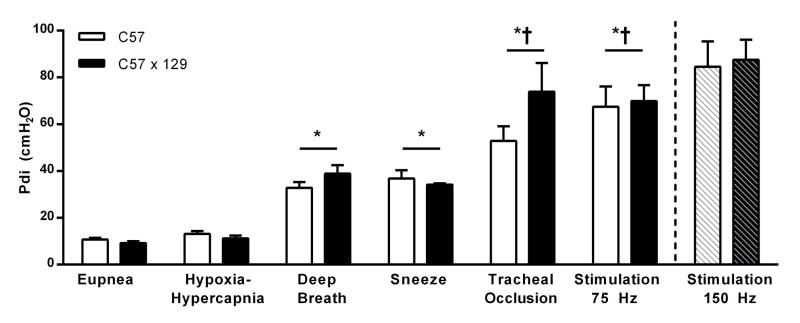Figure 2.
The transdiaphragmatic pressure (Pdi) generated during ventilatory behaviors: eupnea, hypoxia (10% O2)-hypercapnia (5% CO2), spontaneous deep breaths, and non-ventilatory behaviors: sneezing, tracheal occlusion behaviors for C57BL/6J (C57; n=8) and C57BL/6 × 129 (C57×129; n=9) mice. Additionally, Pdi generated during bilateral phrenic nerve stimulation at 75 Hz (n=7 for each strain) and the estimated maximal stimulation at 150 Hz (noted with dashed bars; n=3). Data analyzed by repeated-measures two-way ANOVA (strain × behavior) interaction p=0.910, strain p=0.158; behavior p=0.001, presented as mean ± SE. *Significantly different than eupnea and hypoxia-hypercapnia; †significantly different than deep breaths and sneezing.

